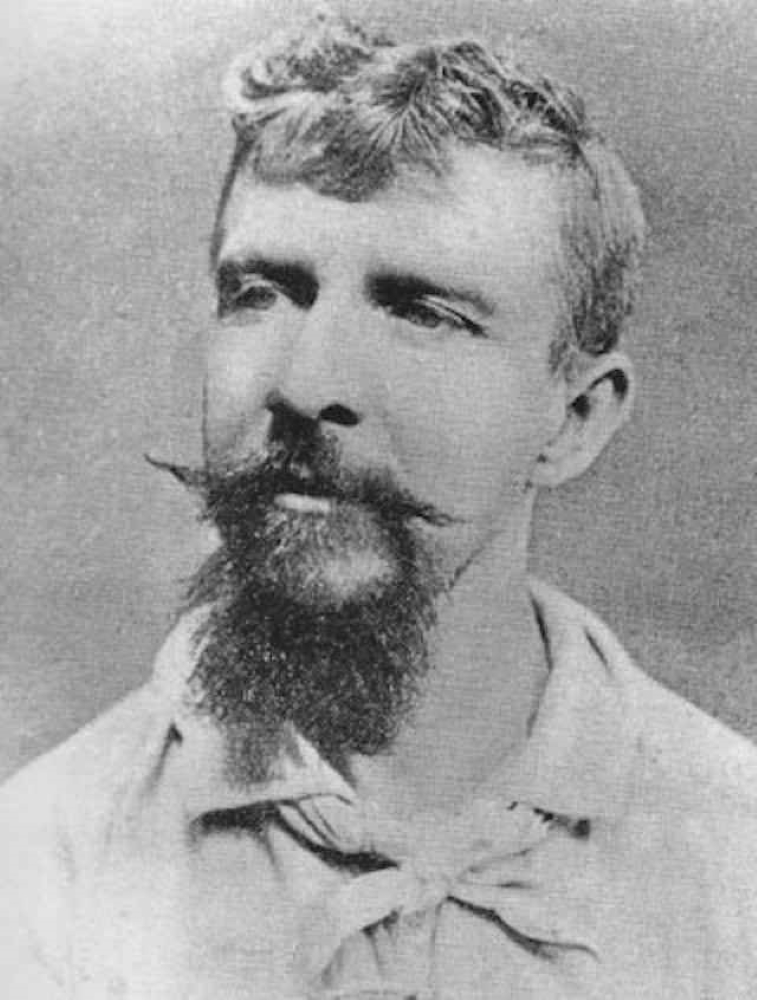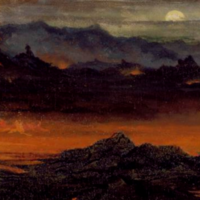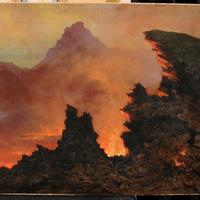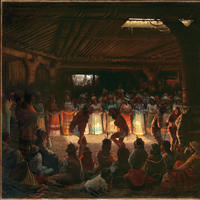More about Jules Tavernier
- All
- Info
- Shop

Sr. Contributor
Jules Tavernier is a French-born American artist known for his impressive light-rich images of the American West and Hawaii.
Tavernier painted images that enticed people to want to visit these places, move to them, and even take them over. We can tell from his paintings as well as available writing that he truly loved the nature he depicted. However, there’s a double-edged sword there, because in bringing celebratory imagery of these far off destinations to the greater public through magazine illustrations and painting commissions, he also led people to those places in ways that arguably destroyed them. This irony sums up the complicated nature of his short life and career.
Jules Tavernier was born in France in April 1844. He trained there and began his career by exhibiting work at the Paris Salon when he was barely out of his teens. Despite this classically French start, he was destined to become an American painter. Tavernier moved to the United States in 1871, starting out in New York. He quickly put his skills to work illustrating the nature he saw around him, and he was hired by Harper’s Weekly to show people the American West. Sometimes we forget in the age of Google that at this time, people in New York would truly have no reference for what California looked like. So, Tavernier traveled to the American West, specifically to the San Francisco Bay Area, and he used his talents to show Easterners what he saw.
In addition to nature he found there, Tavernier also encountered indigenous people in the area. To his credit, he wanted to celebrate them, not erase them. Whereas his contemporaries often only illustrated landscapes devoid of people, as though the Native American population was irrelevant to the West, Tavernier specifically sought out connections with Native Americans and attempted to share a fairly realistic picture of what their lives were like. He met Chief Red Cloud and Sitting Bull, a lieutenant headman of the Oglala Lakota Nation, and he was invited to sit in on Native American ceremonies. His most famous painting is Dance in a Subterranean Roundhouse at Clear Lake, California, which depicts a traditional Native American ceremony.
In many ways, this work and Tavernier's approximately 30 other paintings of indigenous people did their culture justice. He made the Native American people the center of the image. He depicted exactly what he saw, including the regalia and accessories worn by the people. In some paintings, he depicted people on the land that was so closely linked with their lives. However, if this relationship were on Facebook circa 2010, it would be marked “it’s complicated.” In trying to fit as much visual information as possible into a still image, Tavernier would sometimes combine aspects of several days into one painting, distorting some of the factual details. For example, baskets that would never be used in a ceremonial fashion appear in his paintings of ceremonies simply because he did see them in other contexts during the course of his time with the indigenous people.
More complicated still is the role Tavernier played in inspiring white settlers to come take over this land that he found to be so beautiful. Of course, plenty of white people were already doing just that, which is partly why Tavernier was commissioned to go and do this work in the first place. But by making striking images of these areas even more visible and available to the public through his work, Tavernier undoubtedly contributed to the demise of these people and their land. For instance, there were the mining practices that destroyed the Native American land near the San Francisco Bay Area. In the last stages of his life, Tavernier moved to Hawaii, where his depiction of the beauty on the islands was part of a huge tourist boom that ultimately wreaked havoc on that environment.
Do we let Tavernier off the hook because he did better than a lot of white men at the time? He depicted the people and the land as fairly and accurately as he could, though knowing what we know now, it has its obvious flaws. But perhaps the best we can do is contextualize those flaws through an accurate portrayal of his place in history, while also celebrating the aspects of his work that are celebrations of nature.
In addition to the contributions Tavernier made to the pictorial history of the changing life of the indigenous population and the magnificent nature of the West and Hawaii, Tavernier contributed quite a bit to the art world in the places he traveled, as well. In the 1870s, he was one of San Francisco’s leading artists, where he formed the Artist’s Union, founded and was the first president of the San Francisco Palette Club, and became an early member of the Bohemian Club and San Francisco Art Association. During this time, he garnered a lot of attention for his magnificent depictions of indigenous life, as well as his mastery of pastels and his unique use of a vertical format for some of his paintings. The latter was inspired by the magnificent redwoods of the San Francisco Bay Area; he realized that a horizontal format just couldn’t do them justice and went outside of the conventions of the time to create compositions that honored their towering heights. As for the pastels, he arguably was one of the first artists to bring this technique to the forefront in the Bay Area. In addition to his contributions to San Francisco’s art scene, he also helped launch the Monterey Peninsula Art Colony to the south of the city.
When Tavernier moved to Hawaii at what would turn out to be the end of his life, although he was only in his forties at the time, he made similar strides for the art community there. He led the Volcano School, which used art to celebrate the astounding natural beauty of the Hawaiian volcanoes, especially Kilauea, which was among his favorites because of the unique lava lake at its top.
Tavernier is not without his complications as a human, not just as an artist. According to an exhibit at the San Francisco de Young Museum, he ended up in Hawaii in large part because he was in extreme debt and was trying to evade the people he owed money to in the San Francisco Bay Area. The Society of California Pioneers reports that he was unable to leave Hawaii due to these debts, drowned himself in alcohol and was dead of a heart attack by age 45, just a couple of years after arriving on the island. That said, he managed to create over 100 images of the volcanoes of the region, so he was prolific despite his personal downfalls.
Featured Content
Here is what Wikipedia says about Jules Tavernier (painter)
Jules Wilhelm Tavernier (27 April 1844 – 18 May 1889) was a French-American painter, draftsman, illustrator, and member of Hawaii’s Volcano School.
Check out the full Wikipedia article about Jules Tavernier (painter)














